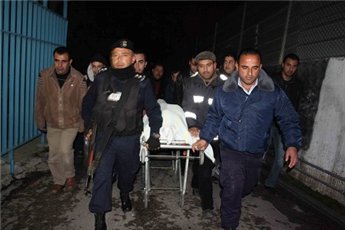Category: In the Media
-
Protester shot and killed at a demonstration at Qalandya checkpoint today, clashes continue in Jerusalem and the West Bank
25 February 2012 | Palestine News Network During a violent protest in which the IOF used live bullets, tear gas and rubber bullets, twenty five year old Talat Ramia, was shot in the shoulder and died later from his injuries. According to medics, five other protesters were injured. An Israeli army spokesman said the incident…
-
Thousands march to end settlements in Hebron
24 February 2012 | Youth Against Settlements The “Youth Against Settlements” movement marked the 18 year anniversary of the Ibrahimi Mosque Massacre with a peaceful march, as part of Apartheid Week in Palestine, demonstrating through the streets of Hebron, violently broken up by Israeli forces. Eight thousand of Palestinians from across the West Bank, joined…
-
Military radio targets protesters for future arrests
24 February 2012 | Israeli Military Radio- Online Shuhada Street in Hebron today may become the scene of a confrontation, as hundreds of left-wing Jews and Arabs are expected to march there to protest the closure of Shuhada Street from Palestinians. Police and army will attempt to keep order. At 12:00 today (Friday) hundreds of leftists, anarchists and Palestinians are expected to arrive in Hebron, walk along Shuhada Street, which is closed to Palestinians. Security forces are preparing for the demonstration and are trying to prevent it from sliding into…


